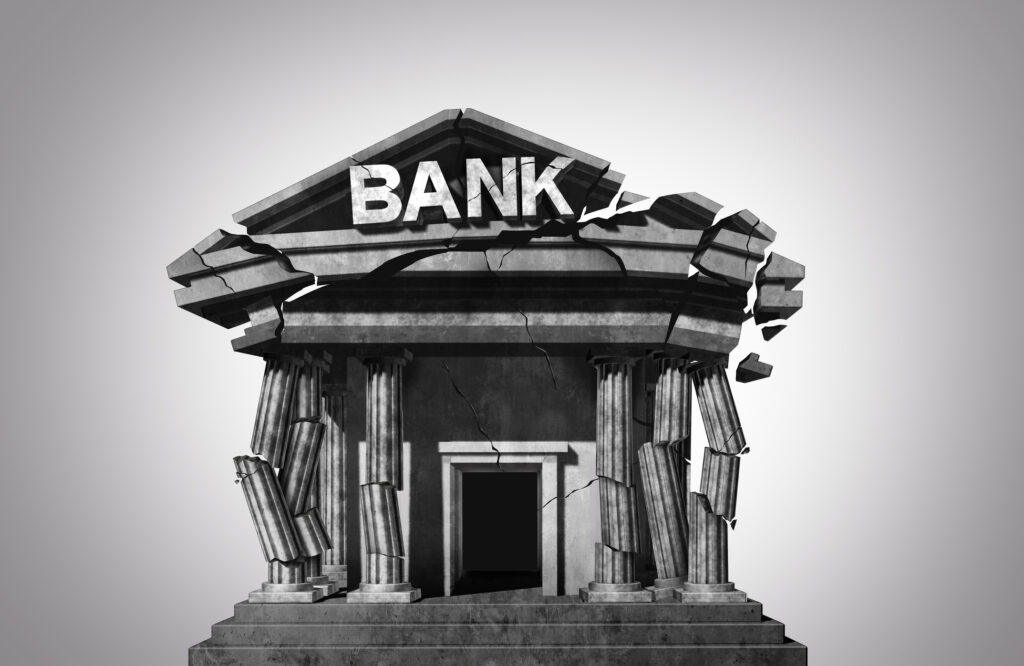Bank failures are rare events, but when they happen, they can have devastating consequences for the economy and society. Bank failures occur when a bank is unable to meet its obligations to its depositors, creditors, or regulators. This can happen due to various reasons, such as excessive risk-taking, poor regulation, fraud, mismanagement, or external shocks.
In this article, we will look at some of the biggest bank failures in U.S. history and see what lessons we can learn from them.
Related Topics:

Washington Mutual (2008)
Washington Mutual was the largest bank failure in U.S. history, with $307 billion in assets at the time of its collapse1. The bank was heavily involved in subprime mortgage lending, which led to massive losses when the housing market crashed in 2007-2008. The bank also faced a run on deposits, as customers withdrew their money fearing its insolvency. The Federal Deposit Insurance Corporation (FDIC) seized the bank and sold most of its assets and branches to JPMorgan Chase for $1.9 billion.
The Washington Mutual failure showed the dangers of excessive risk-taking and lax regulation in the banking sector. It also highlighted the need for more transparency and accountability in the financial system.

First Republic Bank (2023)
First Republic Bank was the second-largest bank failure in U.S. history, with $229 billion in assets at the time of its demise2. The bank was a victim of the banking crisis of 2023, which was triggered by a cyberattack that disrupted the payment systems and caused widespread panic and uncertainty. The bank suffered from a liquidity crunch, as it was unable to access funds from other banks or the Federal Reserve. The FDIC took over the bank and sold it to Wells Fargo for $15 billion.
The First Republic Bank failure showed the vulnerability of the banking sector to cyber threats and the importance of having robust cybersecurity measures and contingency plans. It also showed the need for more cooperation and coordination among regulators and financial institutions in times of crisis.

Silicon Valley Bank (2023)
Silicon Valley Bank was the third-largest bank failure in U.S. history, with $209 billion in assets at the time of its downfall3. The bank was a major lender to technology startups and venture capitalists, which made it exposed to high volatility and uncertainty in the tech sector. The bank also faced a fraud scandal, as it was revealed that some of its executives had embezzled funds and manipulated financial statements. The FDIC seized the bank and sold it to Bank of America for $12 billion.
The Silicon Valley Bank failure showed the risks of over-reliance on a single industry and the need for more diversification and prudence in lending practices. It also showed the need for more oversight and ethics in the banking sector.

Signature Bank (2023)
Signature Bank was the fourth-largest bank failure in U.S. history, with $118 billion in assets at the time of its collapse. The bank was a prominent player in the New York real estate market, which suffered a severe downturn due to the pandemic and social unrest. The bank also faced a lawsuit from the New York Attorney General, who accused it of engaging in predatory lending and discrimination against minority borrowers. The FDIC took over the bank and sold it to Citigroup for $10 billion.
The Signature Bank failure showed the risks of concentration and complacency in the banking sector. It also showed the need for more social responsibility and fairness in banking practices.

Continental Illinois (1984)
Continental Illinois was the fifth-largest bank failure in U.S. history, with $40 billion in assets at the time of its failure1. The bank was a major lender to oil and gas companies, which faced financial difficulties due to falling oil prices and rising interest rates. The bank also suffered from bad loans made by its subsidiary, Penn Square Bank, which specialized in energy lending. The FDIC intervened and injected capital into the bank, making it effectively a government-owned entity.
The Continental Illinois failure showed the dangers of contagion and systemic risk in the banking sector. It also introduced the concept of “too big to fail”, which implied that some banks were so large and interconnected that their failure would pose a threat to the entire financial system.

Conclusion
Bank failures are rare but costly events that can have significant impacts on the economy and society. They can be caused by various factors, such as risk-taking, regulation, fraud, mismanagement, or external shocks. They can also teach us valuable lessons about how to improve our banking system and make it more resilient, transparent, accountable, diversified, prudent, ethical, responsible, and fair.



